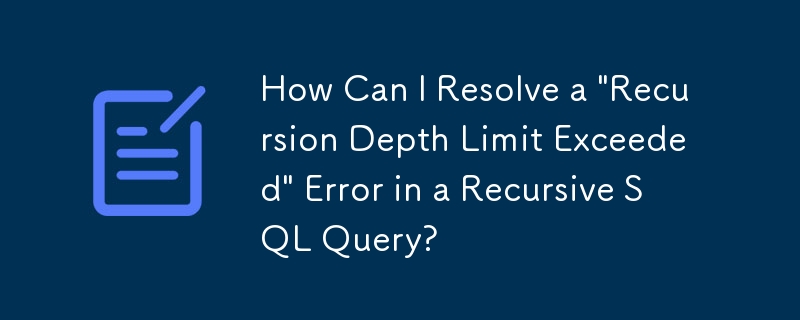Found a total of 10000 related content

How to validate forms client-side using HTML5 attributes?
Article Introduction:Form verification can be implemented through built-in HTML5 properties. 1. Use required to ensure the required items; 2. Restrict input formats such as mailbox and zip code through type and pattern; 3. Use min, max, minlength, and maxlength to control the range and length of the numerical value. These methods can improve the front-end experience without JavaScript, but key verification still needs to be completed with the back-end.
2025-07-14
comment 0
195

Implementing real-time communication using HTML5 Server-Sent Events.
Article Introduction:Server-SentEvents (SSE) is a technology in HTML5 used to implement efficient one-way communication between servers and clients, suitable for notification push and data updates. It is based on the HTTP protocol and supports automatic reconnection. The message format is simple. The front-end listens to events through EventSource. The back-end needs to set the text/event-stream type and keep the connection. Common problems include connection timeout, message loss and concurrency restrictions, which are suitable for lightweight real-time scenarios.
2025-07-08
comment 0
200

Building Real-Time Applications with HTML5 WebSockets
Article Introduction:WebSocket is a full-duplex communication protocol provided by HTML5, which allows the browser to establish a persistent connection between the server and realizes efficient real-time data transmission. Its core advantage is that it does not require repeated connection establishment, reduces latency and improves efficiency. When building real-time functions, the front-end creates WebSocket instances through JavaScript and listens to events, and the back-end can use languages ??such as Node.js, Python or Java to process connections and message broadcasts. Common application scenarios include chat applications, online collaborative editing, real-time data display and notification systems. During development, you need to pay attention to cross-domain issues, connection maintenance mechanism, compatibility, back-end concurrent pressure and security details, and combine Redis or Nginx to improve performance and expansion if necessary.
2025-07-04
comment 0
229

Implementing Client-Side HTML5 Form Validation
Article Introduction:Form verification can be achieved through built-in HTML5 features, without relying on JavaScript. Use required, min/max, and pattern attributes to ensure the legality of input; use the browser's default error prompts or custom content; improve the interactive experience through the CSS's :valid/:invalid pseudo-class; at the same time, it is necessary to pay attention to compatibility, and combine back-end verification and testing to ensure cross-browser compatibility.
2025-07-04
comment 0
487

Exploring Different Input Types for HTML Forms
Article Introduction:The input type improves form experience and verification efficiency. HTML5 provides various input types such as text, password, email, etc., which are adapted to different scenarios such as username, password hiding, and email verification; supports number limited number input, date selection, checkbox multiple selection, radio single selection, file upload, range slider bar, color color selection; combines required, min/max, and pattern to achieve front-end verification to reduce the burden on the back-end; mobile terminals automatically adapt to keyboard types such as email display @ symbols, tel calls numeric keyboards; provide input-able option list, readonly lock fields, hidden through datalist
2025-07-06
comment 0
569

Using the HTML5 `pattern` attribute for input validation regex.
Article Introduction:Using HTML5's pattern attribute allows for convenient front-end input verification without JavaScript. 1. The basic usage is to write regular expressions into the pattern attribute of the input tag, which is used to restrict the content of the text input box; 2. Regular expressions should be added to ^ and $ to ensure full match and avoid misjudgment; 3. It can provide clearer prompt information with the title attribute, but the mobile side may not display it; 4. Common application scenarios include verification of mobile phone numbers, postal codes, passwords, license plate numbers, etc., but back-end verification is still required to ensure data security.
2025-07-04
comment 0
290

What are Server-Sent Events (SSE) and how do you use them with HTML?
Article Introduction:Server-SentEvents (SSE) is an HTTP-based HTML5 standard API that allows servers to push real-time data to clients one-way. 1. It establishes a persistent connection through the EventSource object. The server sends data in text/event-stream format, and each push triggers client event processing; 2. It is simple to use, and the front-end only needs to listen to message events or specific event types to receive and process data; 3. The back-end needs to set Content-Type to text/event-stream, and continuously output messages that match the format; 4. Common precautions include solving cross-domain problems, controlling push frequency, and testing browser compatibility
2025-07-10
comment 0
409

Building Real-time Apps with HTML5 WebSockets
Article Introduction:WebSockets is a key technology for real-time applications, providing persistent two-way communications that are more efficient than polling. 1. It is an HTML5 protocol, allowing clients and servers to send data to each other at any time; 2. When using it, the front-end establishes connections and listens to events through several lines of code, and the back-end needs to cooperate with a library that supports WebSocket; 3. Application scenarios include chat rooms, stock updates, online games, collaborative documents, etc.; 4. When using it, pay attention to the cross-domain, reconnection mechanism, and message formats unified into JSON and encryption protocol wss://.
2025-07-13
comment 0
711

Common pitfalls when migrating from HTML4 to HTML5.
Article Introduction:Five key points should be paid attention to when migrating HTML5: First, we must use semantic tags correctly, understand their purpose rather than mechanical replacement; second, we must consider the support issues of old browsers, and introduce the html5shiv library if necessary; third, we must avoid the abuse of semantic tags to cause structural confusion; fourth, we must pay attention to changes in form controls and attributes, including verification behavior, style differences and back-end compatibility; fifth, comprehensive testing ensures normal functions.
2025-07-12
comment 0
667

Using Server-Sent Events (SSE) as an alternative to HTML5 WebSockets.
Article Introduction:Server-SentEvents (SSE) is a one-way communication protocol based on HTTP that allows servers to push data to clients in real time. 1. It is part of the HTML5 standard and is implemented through the EventSource interface. It is suitable for stock markets, news pushes, and other scenarios where the client does not need to actively send data. 2. Compared with WebSocket, SSE is simpler and easier to use, has better compatibility, automatically supports reconnection, and can better penetrate the firewall. 3. The front-end creates EventSource connection through JavaScript, and the back-end needs to set a specific response header and continuously return the data stream in text/event-stream format. 4. Pay attention to browser compatibility and cross-section when using it
2025-07-07
comment 0
259

Designing and Validating HTML Forms for User Input
Article Introduction:Designing and verifying HTML forms requires both user experience and data accuracy. 1. Use appropriate form elements to improve the interactive experience and assist the browser to identify the input type, such as inputtext for text, inputpassword for password, radio for single choice, checkbox for multiple choice, and select for pull-down option; 2. Use HTML5 built-in verification function to reduce JavaScript workload, including required attribute, type=email/url automatic format verification, and min/max/pattern restriction input; 3. Back-end verification cannot be omitted, and it is necessary to check whether the field is empty, verification format, filter sensitive content, and limit input length
2025-07-16
comment 0
119

How to use the required attribute for form validation?
Article Introduction:The required property is the basic tool in HTML5 for form validation, ensuring that users fill in fields before submitting. 1. It is directly added to or tags, so that the browser prompts the user when the field is empty; 2. Use it in combination with multiple input types such as email, number, url and tel to improve the user experience; 3. Automatically integrate form submission behavior to prevent unfilled required items from being submitted, and supports more comprehensive verification with properties such as placeholder, pattern, minlength/maxlength and other properties; 4. But only check whether it is empty, and do not verify the rationality of the content. Complex logic still requires JavaScript or back-end verification.
2025-07-12
comment 0
746


Dave The Diver: How To Catch Spider Crabs
Article Introduction:In Dave The Diver, there are some creatures that are not easy to catch. Or, catch alive that is. The spider crab is one of those very species, making it seem like the only way to bring these crustaceans back up to land is to viciously crack them up w
2025-01-10
comment 0
809

Prepare for Interview Like a Pro with Interview Questions CLI
Article Introduction:Prepare for Interview Like a Pro with Interview Questions CLI
What is the Interview Questions CLI?
The Interview Questions CLI is a command-line tool designed for JavaScript learners and developers who want to enhance their interview
2025-01-10
comment 0
1437

Soft Deletes in Databases: To Use or Not to Use?
Article Introduction:Soft Deletes: A Question of DesignThe topic of soft deletes, a mechanism that "flags" records as deleted instead of physically removing them, has...
2025-01-10
comment 0
1052



















